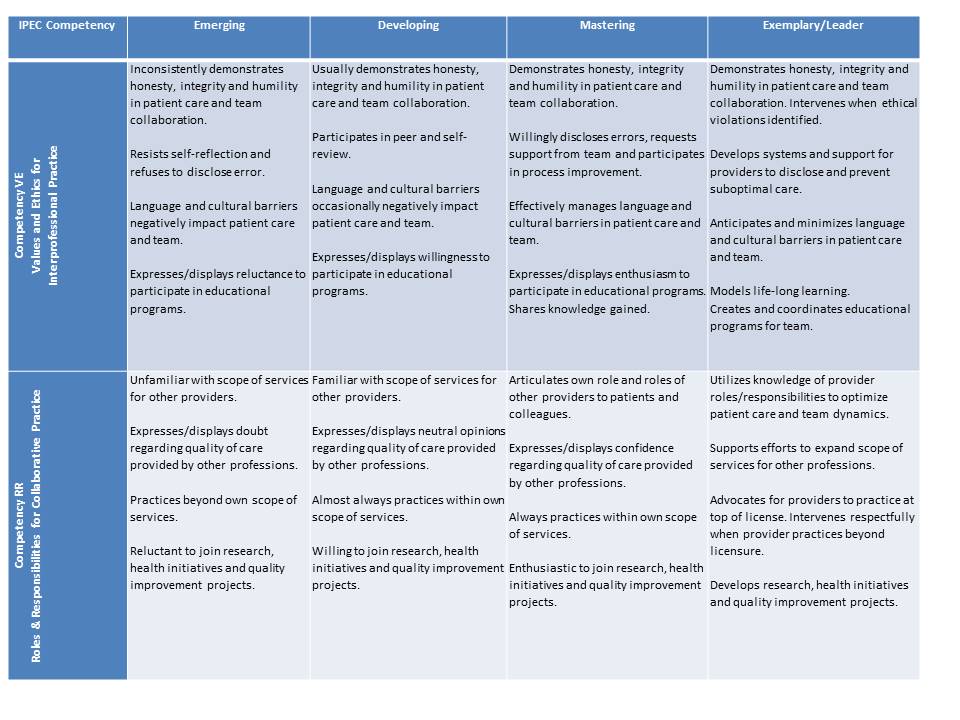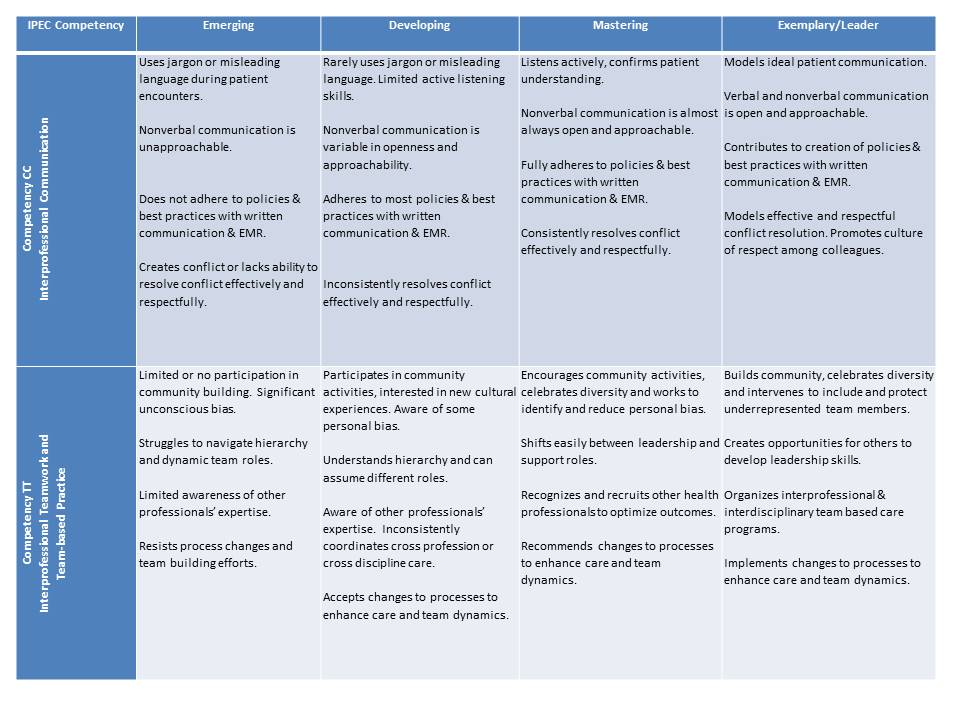Developing Tools to Assess Interprofessional Practice Behaviors in Outpatient Family Medicine Settings
Stephanie White, DO, and David Dickter, PhD
Interprofessional teams are increasingly used in ambulatory primary care practices. This has created a growing need for tools to assess interprofessional practice behaviors. While general competencies exist for interprofessional education and practice, current interprofessional assessment tools focus primarily on attitudes and general competencies that apply across health care teams or teams in general.1 “Collaborate as a member of an interprofessional team” is one of thirteen core Entrustable Professional Activities (EPAs) the Association of American Medical Colleges (AAMC) expects all graduating medical students to be able to perform without direct supervision by the time they begin residency.2 There is a shortage of measures to assess overall clinic performance in the outpatient setting and specifically in ambulatory family medicine. To meet these needs, Western University of Health Sciences has developed an assessment tool for family medicine providers that is adaptable for multiple professions who participate in outpatient family medicine practice.
Development of this assessment tool was a multi-step process. Focus groups and individual interviews with physicians, physician assistants, nurses/nurse practitioners, and medical assistants were conducted to generate lists of behaviors and practices that facilitate or impede team based care. The aim was to capture some of the very specific behaviors seen on a day to day basis in the clinic but also to measure broader skills and behaviors exemplified by members of the clinical hierarchy. For example, to describe measures of a previously undefined “community building” skill, the focus group discussions on this topic emphasized the value of being connected and integrated into the team both professionally and personally. Clinicians who failed to connect in this way tended to struggle in other domains of teamwork and mutual respect. When focus group lists were finalized, the content was sorted into themes or categories, and behavior-based items and a rating scale of observed frequency of each item were developed. The assessment tool was piloted on a working team of family medicine professionals; this resulted in further revisions in the tool for the purpose of clarity and brevity. The rubric was categorized using the four competencies of the Interprofessional Education Collaborative (IPEC)3 and organized around a progressive skill set in interprofessional practice. Performance levels are described as “Emerging, Developing, Mastering and Exemplary/Leader.” After an additional iteration, the tool was condensed into a clear and pragmatic performance rubric.


This assessment tool is currently being studied and tested across multiple institutions and will likely undergo further revision to most effectively assess interprofessionalism, enhance team dynamics, support emerging members of the team, and most importantly, improve patient outcomes. The goal is to develop a validated instrument that effectively measures one’s ability to practice outpatient Family Medicine as a member of an interprofessional team. This rubric can be can be adapted in full or in part by others to design tools to assess the interprofessional practice behaviors of their specific discipline.
References
- Canadian Health Collaborative. An inventory of quantitative tools measuring interprofessional education and collaborative practice outcomes. August 2012. https://rcrc.brandeis.edu/pdfs/Canadian%20Interprofessional%20Health%20Collaborative%20report.pdf
- Association of American Medical Colleges. Core Entrustable Professional Activities for entering residency: Curriculum developers’ guide; 2014. Available from https://ipecollaborative.org/uploads/IPEC-2016-Updated-Core-Competencies-Report__final_release_.pdf
- Interprofessional Education Collaborative Expert Panel. Core Competencies for Interprofessional Collaborative Practice: Report of an Expert Panel. 2011. http://www.aacn.nche.edu/education-resources/ipecreport.pdf
